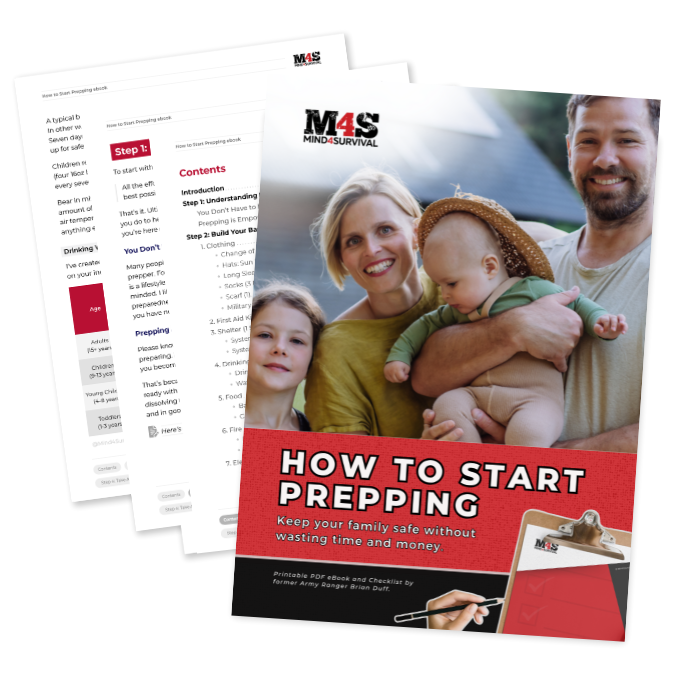FEMA Emergency Supply List. Will You Be Ready?
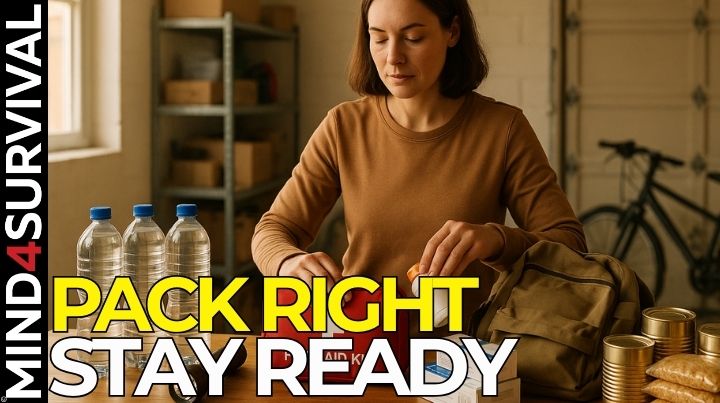
From hurricanes and wildfires to power grid failures and civil unrest, emergencies can upend normal life with little warning. When that happens, the time to prepare is already over. That's why building a reliable emergency response kit is one of the most essential steps anyone can take toward personal resilience.
FEMA (Federal Emergency Management Agency) has developed a clear, evidence-based disaster supplies kit checklist of what every American should have on hand to survive for at least 72 hours during a disaster. This isn't just for people living in high-risk areas—electricity, water, food supply, or communications disruptions can happen anywhere, anytime. Here's the official FEMA checklist.
Think of your emergency kit as a form of insurance. You may not use it daily, but when you need it, it can make all the difference. Whether you're facing a storm, a blackout, or a sudden evacuation, a properly stocked kit helps you protect your household, stay calm under pressure, and operate with confidence
This article will walk you through FEMA's official recommendations, break down what they mean in practical terms, and highlight common mistakes to avoid. You'll also learn how to adapt your kit to suit your family's needs and why location-specific and situation-specific kits are critical. The key isn't perfection—it's progress. Start with the basics, build steadily, and prepare with purpose.
Why You Need an Emergency Supply Kit
Emergencies often strike without warning. A snowstorm can shut down roads. A cyberattack can take out the power grid. A chemical spill could force you to shelter in place.
FEMA recommends having enough supplies to sustain your household for at least 72 hours—I recommend longer, at least seven days. Emergency services may not reach you right away, and store shelves could be empty.
Preparedness isn't panic in the moment—it's peace of mind knowing that you're ready. Building a basic disaster supplies kit helps you stay calm and capable when others are caught off guard.
The FEMA-Recommended Basic Emergency Supplies Kit
Here's what FEMA considers essential for all households:
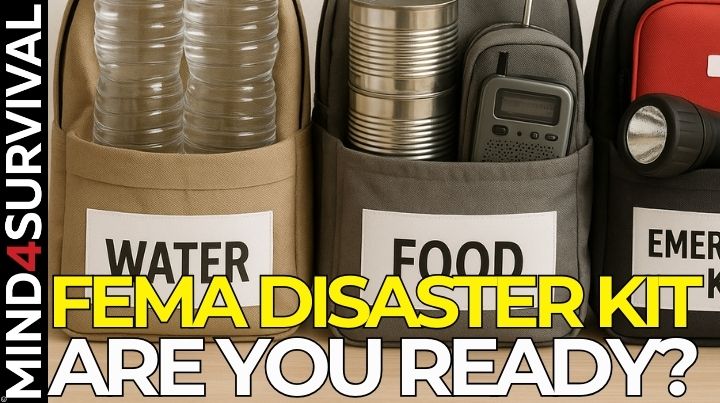
Core Items:
- Water: One gallon per person per day (for at least three days). More in hot climates or for medical needs.
- Non-perishable food: Enough for three days. Canned goods, protein bars, dry cereal, nut butter, etc.
- Manual can opener: For your canned food.
- Battery-powered or hand-crank radio: With NOAA Weather Radio alerts.
- Flashlight: Plus extra batteries.
- First aid kit
- Whistle: To signal for help.
- Dust mask: For filtering contaminated air.
- Plastic sheeting and duct tape: For creating a sealed shelter-in-place area.
- Moist towelettes, garbage bags, plastic ties: For sanitation and hygiene.
- Wrench or pliers: To turn off utilities like gas or water.
- Local maps: These are for navigation if GPS fails.
- Extra phone battery or charger: Solar, battery, or hand-crank.
Pro Tip: Store everything in a durable container like a large plastic bin with a secure lid. Label it clearly and store it somewhere accessible.
Additional Emergency Supplies to Consider
FEMA also suggests these based on your household's specific needs:
- Prescription medications and eyeglasses
- Infant formula, bottles, diapers, wipes
- Pet food and extra water for pets
- Copies of personal documents: Insurance policies, ID, medical records—stored in a waterproof bag or container
- Cash and change: ATMs may not work.
- Fire extinguisher
- Matches in a waterproof container
- Sleeping bag or warm blanket for each person
- Extra clothes: Sturdy shoes, long pants, long sleeves (adjust for cold climates)
- Feminine hygiene and personal hygiene items
- Mess kits, paper cups, utensils, paper towels
- Notebook and pencil
- Books, games, puzzles: Especially important for kids.
How Many Disaster Readiness Kits Should You Have?
At a minimum, FEMA advises creating:
- One entire disaster supplies kit for your home
- One portable kit for each vehicle
- One smaller kit for your workplace or daily carry
Why?
Emergencies don't always happen when you're at home. You might be at work, stuck in traffic, or evacuating during a disaster. Redundancy = resilience.
Common Emergency Supply Kit Mistakes to Avoid
Even well-meaning preppers can get it wrong. Here are mistakes to avoid:
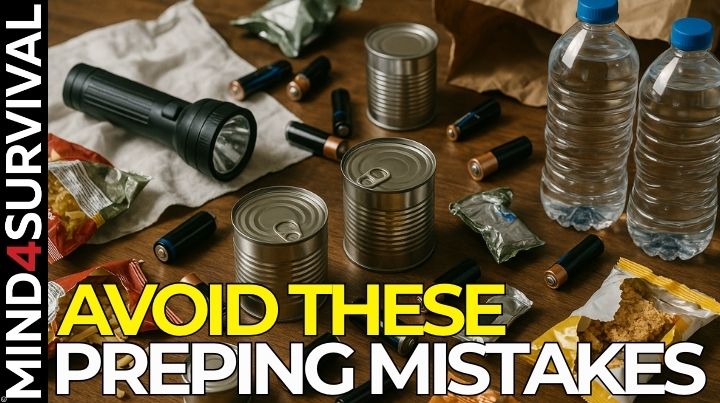
- Relying on “grab-and-go” kits only. Many pre-made kits lack essentials like enough water or a proper radio. Always supplement or customize.
- Forgetting to rotate food/water. Check expiration dates every 6 months. Mark your calendar.
- Neglecting specific needs. Medications, baby care, pet supplies—don't leave these out.
- Overpacking the wrong stuff. Skip the gear you don't know how to use. Prioritize usability.
- Storing kits out of reach. Don't bury it in the attic. It should be easy to grab fast.
TL;DR Key Takeaways
- Build an emergency kit to meet FEMA's baseline guidance.
- Customize it for your family's needs—meds, kids, pets, climate.
- Place kits strategically—home, car, and work.
- Rotate your supplies regularly and practice using your gear.
- Don't wait until disaster strikes to prepare.
The Bottom Line on the FEMA Emergency Checklist
In times of crisis, uncertainty and overwhelm is the enemy. Preparedness is the solution.
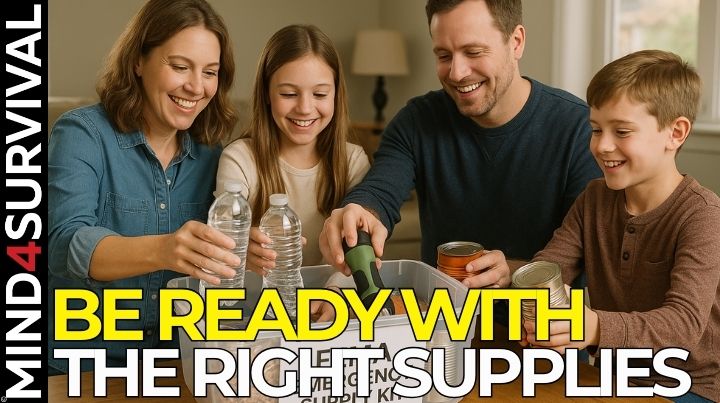
Building an emergency supply kit based on your family's needs is one of the most straightforward, empowering steps to protect yourself and the people you care about. You don't need to be an expert, spend a fortune, or dedicate every spare moment to prepping. But you do need to start. You do need to have something ready for you and your family—just in case.
If you've read this far, you're already ahead of the curve. You're someone who takes responsibility seriously—and that makes you a leader in your circle when it matters most.
Start with the basics. Follow the FEMA list. Adjust for your situation. And remember: when things go wrong, the best time to prepare was yesterday. The second-best time is today.
Do you have any items you will add to this list? Tell us in the comments below.
Additional Resources
- Everlit Emergency Trauma Kit (This Kit Has You Covered!)
- 21 Budget-Friendly Items to Stockpile Now
- How to Build a Food Stockpile on a Budget
FAQs About FEMA Emergency Supply Kits
How much water should I store in my FEMA emergency kit?
You should store at least one gallon of water per person per day, for a minimum of three days. That covers both drinking and sanitation. In hotter climates or for medical needs, plan for even more.
What types of food should be in an emergency supply kit?
Focus on non-perishable, easy-to-prepare foods like canned goods, energy bars, peanut butter, dry cereal, and ready-to-eat meals. Choose items you and your family will actually eat, and remember to include a manual can opener.
How often should I update or check my emergency kit?
You should check and refresh your kit every six months. Rotate out expired food, replace batteries, update personal documents, and adjust supplies for the current season or any changes in your household.
What if I can’t afford to build a full kit right now?
Start small. Even gathering a few extra cans of food and bottled water is a big step forward. Preparedness is about progress, not perfection. Add supplies steadily as your time and budget allow.
Should I have more than one emergency supply kit?
Yes. FEMA recommends having a full emergency kit at home, plus smaller kits for your vehicle and your workplace. Emergencies rarely happen when it’s convenient — redundancy builds resilience.
Related Articles
FREE Guide
Read the Best Seller
Join Mind4Survival
Stay informed by joining the Mind4Survival! 100% Secure! 0% Spam!
Affiliate Disclosure...
Mind4Survival is a free, reader-supported information resource. If you make a purchase through our link, we may, at no cost to you, receive an affiliate commission.
Do You Want To Be Ready No Matter What?
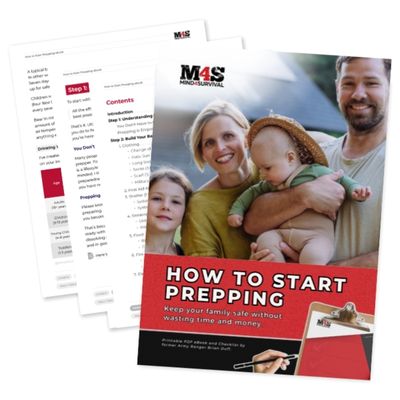
Download our free 39-page guide with interactive, 7-Day Emergency Kit Checklist and take the first step toward real preparedness.
- Know exactly where to start.
- Save time and money.
- How-to build a complete Basic Emergency Kit.
- Level up your safety and security.
Join Mind4Survival
Stay informed by joining the Mind4Survival! 100% Secure! 0% Spam!




